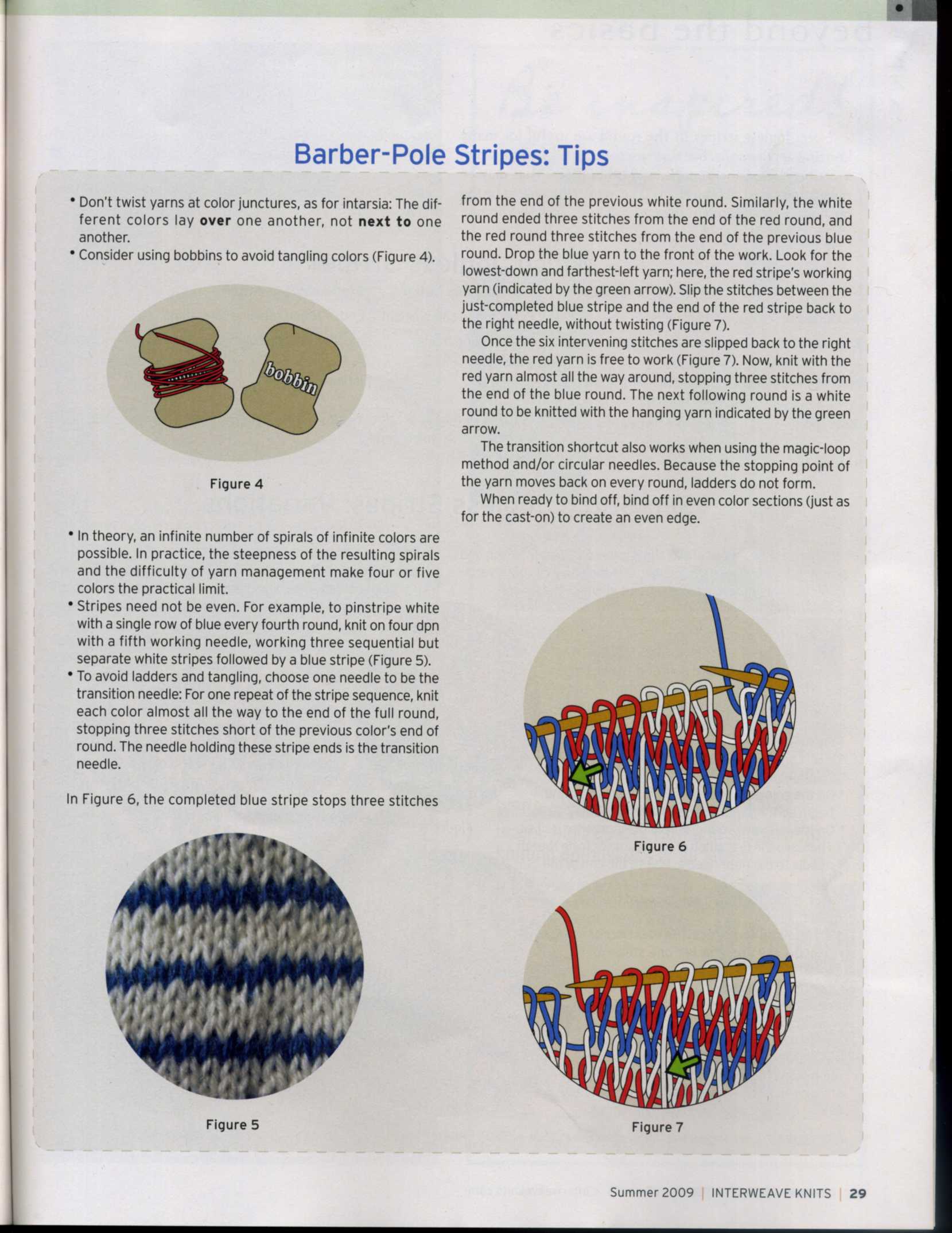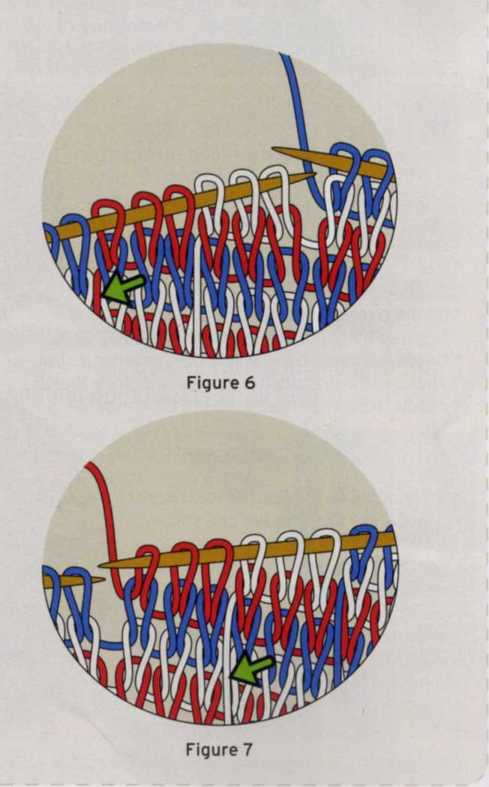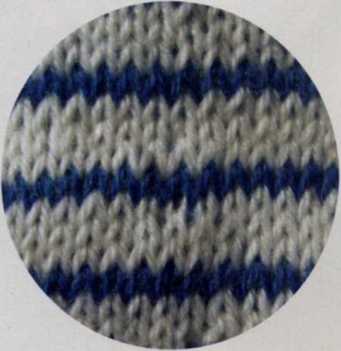img010 (41)

Barber-Pole Stripes: Tips
• Don’t twist yarns at color junctures, as for intarsia: The dif-ferent colors lay over one another, not next to one another.
• Consider using bobbins to avoid tangling colors (Figurę 4).

Figurę 4
from the end of the previous white round. Similarly, the white round ended three stitches from the end of the red round, and the red round three stitches from the end of the previous blue round. Drop the blue yarn to the front of the work. Look for the lowest-down and farthest-left yarn; here, the red stripe’s working yarn (indicated by the green arrow). Slip the stitches between the just-completed blue stripe and the end of the red stripe back to the right needle, without twisting (Figurę 7).
Once the six intervening stitches are slipped back to the right needle, the red yarn is free to work (Figurę 7). Now, knit with the red yarn almost all the way around, stopping three stitches from the end of the blue round. The next following round is a white round to be knitted with the hanging yarn indicated by the green arrow.
The transition shortcut also works when using the magic-loop method and/or circular needles. Because the stopping point of the yarn moves back on every round, ladders do not form.
When ready to bind off, bind off in even color sections (just as for the cast-on) to create an even edge.

Summer 2009 INTERWEAVE KNITS 29
• In theory, an infinite number of spirals of infinite colors are possible. In practice, the steepness of the resulting spirals and the difficulty of yarn management make four or five colors the practical limit.
• Stripes need not be even. For example, to pinstripe white with a single row of blue every fourth round, knit on four dpn with a fifth working needle, working three sequential but separate white stripes followed by a blue stripe (Figurę 5).
• To avoid ladders and tangling, choose one needle to be the transition needle: For one repeat of the stripe sequence, knit each color almost all the way to the end of the fuli round, stopping three stitches short of the previous color’s end of round. The needle holding these stripe ends is the transition needle.
In Figurę 6, the completed blue stripe stops three stitches

Figurę 5
Wyszukiwarka
Podobne podstrony:
I I w I l I electronics DON 7 WASTE MONEY on poor speakers Write for our FREE Raw
p002 - Yeah, I think we ) r should. But I just i think it looks like I want to... and don
— Boost 350 •o 9:41 Yeezy u. $425 Yeezy 700 V?$425♦ * * * * 10 o A new color version of Kanye Wesf s
DON T MISS MORĘ PEPPER MARTIN FROM Casey DanielsNIGHT OF THE LOVING DEAD Pepper Martin,
41 (284) -4- FO 3434RE-25 large RPF, to assist him and as well to cover for him while he is on his e
DON’T DRINK AND DRIVE. BUT IFYOU DO, CALLME. -SAUL THE FINAŁ EPISODES SUNDAYS 9/8 C Breaking Bad
251993@616325608796348217967 n We don t give up tliat easily; we fight for what we want. It takes a
40 41 * 35* Duży tłok w prasie hydraulicznej przesuwa się w jednym suwie o 1 cm, a mały tłok o 20 cm
więcej podobnych podstron